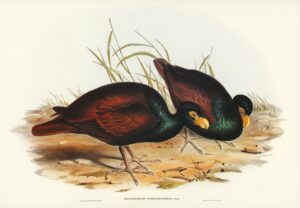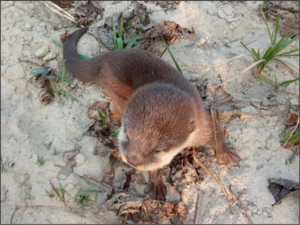Scientists have discovered the largest species of giant anaconda on Earth in the Amazon rainforest. It grows up to 7.5m long and weighs an astonishing 500kg. The scientists were with a film crew when they stumbled across the new species.
Anacondas are huge, non-venomous constricting snakes. They live near or in water. Previously, we knew of four species of anaconda. The largest of these was the green anaconda.
New research shows that the green anaconda has two separate species. They look so similar that experts can barely tell them apart, but genetically they are hugely different –- five and a half percent different, to be precise.
“To put that into context, we’re about two percent different from chimps,” Brian Fry, co-author of the study, told National Geographic.
The researchers had gone to the Amazon to study the green anaconda.
Sacred creature
“Our team received a rare invitation from the Waorani people to explore the region and collect samples from a population of anacondas, rumored to be the largest in existence,” Fry explained in a statement. “The indigenous hunters took us into the jungle on a 10-day expedition to search for these snakes, which they consider sacred.”
Working with the Waorani people, they captured a number of the giant snakes across the Ecuadorian Amazon.
“The size of these magnificent creatures was incredible. One female anaconda we encountered measured an astounding 6.3 meters long,” said Fry. The entire discovery was captured on camera for National Geographic’s upcoming series, Pole to Pole with Will Smith.

Northern green anaconda ‘breeding ball.’ Photo: Jesus Rivas
The team studied took blood and tissue samples from the huge snakes. They also looked at their physical traits, counting the scales and looking at their markings and coloring.
Split 10 million years ago
A geographical and genetic split quickly appeared. The anacondas in the north were clearly different from those in the south. Analysis revealed that they diverged around 10 million years ago. They are proposing that the green anaconda split into two groups: the southern green anaconda (Eunectes murinus) and the northern green anaconda (Eunectes akayima).
The splitting of the species is crucial for conservation efforts, according to Fry. Currently, the green anaconda is classed as a species of “least concern” by the International Union for Conservation of Nature. However, this would change dramatically if the species is split.
“It’s important because the newly described northern green anaconda has a much smaller range than the southern, [so] it’s much more vulnerable,” says Fry. It is also the larger of the two, which makes it the largest snake in the world.
As with many species in the Amazon, the main concern is the threat from humans. Deforestation for agriculture has caused a 21-30 percent habitat loss. This is expected to rise to 40% by 2050. Mining, forest fires, and climate change all threaten the newly discovered species.






